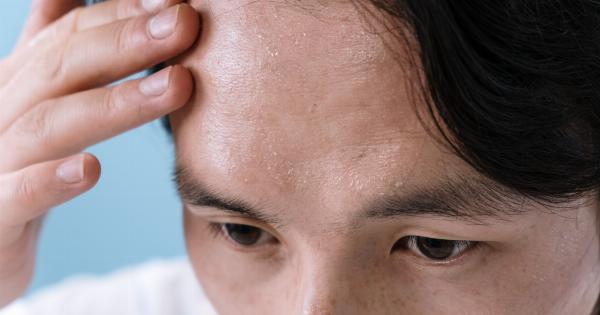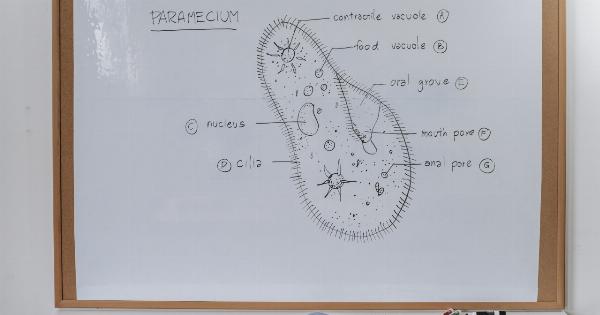Lyme disease is a tick-borne illness that can have serious consequences if not diagnosed and treated promptly.
Caused by the bacterium Borrelia burgdorferi, this disease is prevalent in certain regions of the world, particularly in North America, Europe, and Asia. Lyme disease can manifest in various ways and its symptoms often imitate other conditions, making it difficult to diagnose accurately.
In this article, we will explore the warning signs of Lyme disease and discuss how early detection and treatment are crucial for a successful recovery.
H2: Transmission of Lyme Disease
Lyme disease is primarily transmitted through the bite of infected black-legged ticks, also known as deer ticks.
These ticks become carriers of the Borrelia burgdorferi bacterium after feeding on infected animals, predominantly small mammals such as mice and squirrels. When an infected tick bites a human, it transfers the bacteria, leading to the development of Lyme disease. It’s important to note that not all tick bites result in the transmission of Lyme disease.
The tick must be infected and attached to the person for a certain period, usually 36-48 hours or more, for transmission to occur.
H2: Early Signs and Symptoms
Lyme disease can present with a wide range of symptoms, and they may vary from person to person.
In the early stages, individuals infected with Lyme disease often experience flu-like symptoms, such as fever, fatigue, headache, muscle aches, and swollen lymph nodes. As these symptoms are non-specific and can be attributed to various other illnesses, Lyme disease is frequently misdiagnosed or overlooked during this phase.
However, one distinctive feature of Lyme disease is the characteristic skin rash known as erythema migrans (EM). This rash typically appears within 3-30 days of a tick bite and expands gradually, resembling a bull’s-eye pattern. It may or may not cause itching or pain.
H2: Progression of Symptoms
If left untreated, Lyme disease can progress into later stages, leading to more severe symptoms and complications. These advanced symptoms may include:.
Nervous system involvement can manifest as meningitis, causing symptoms such as severe headaches, neck stiffness, and sensitivity to light.
Lyme disease can also lead to facial paralysis (Bell’s palsy), tingling or numbness in hands and feet (peripheral neuropathy), and cognitive issues.
Lyme disease can cause inflammatory arthritis, particularly affecting larger joints such as the knees. Joint pain, swelling, and stiffness can be recurring or migrate between different joints.
In rare cases, Lyme disease affects the heart, causing various cardiac problems. These can include irregular heartbeat (arrhythmias), shortness of breath, chest pain, and heart palpitations.
In some individuals, Lyme disease symptoms can persist for months or even years after the initial infection, leading to a condition known as chronic Lyme disease.
These symptoms can range from persistent fatigue, musculoskeletal pain, and neurological issues to cognitive impairments and mood disturbances. The existence of chronic Lyme disease is controversial within the medical community, and its diagnosis and treatment remain a subject of debate.
H2: Diagnosis and Treatment
Diagnosing Lyme disease can be challenging due to the similarity of its symptoms to those of other conditions.
However, a comprehensive evaluation of the patient’s medical history, clinical presentation, and sometimes laboratory tests can aid in an accurate diagnosis. Serological tests, such as the enzyme immunoassay (EIA) and the Western blot test, are commonly employed to detect antibodies against Borrelia burgdorferi in the blood.
It’s important to note that these tests may not yield reliable results in the early stages of the disease when antibody levels are still developing.
Treatment for Lyme disease involves the administration of antibiotics. In the early stages, oral antibiotics such as doxycycline, amoxicillin, or cefuroxime axetil are typically prescribed for a period of 10-21 days.
In certain cases, intravenous antibiotics may be necessary, especially if the disease has progressed to more advanced stages or if neurological involvement is present. Prompt diagnosis and treatment are crucial in preventing the progression of Lyme disease and minimizing the risk of complications.
H2: Prevention is Key
The best way to combat Lyme disease is by preventing tick bites. Here are some preventive measures you can take:.
When possible, steer clear of areas known to be heavily infested with ticks, such as dense woods or tall grasses. If you need to be in these areas, take precautions to minimize exposure.
Wear long-sleeved shirts, long pants, and closed-toe shoes. Tuck your pants into your socks or boots to prevent ticks from crawling up your legs. Light-colored clothing can make it easier to spot ticks.
Apply an Environmental Protection Agency (EPA)-registered insect repellent onto your skin and clothing, following the instructions on the product label. Look for repellents containing DEET, picaridin, or IR3535.
After spending time outdoors, thoroughly check your body for ticks. Inspect your entire body, including hard-to-see areas such as your scalp, armpits, and groin. Promptly remove any attached ticks using tweezers.
Pets can also contract Lyme disease. Consult with your veterinarian about tick preventive products suitable for your pets. Additionally, conducting regular tick checks on your pets can help prevent transmission to you and your family.
H2: Conclusion
Recognizing the warning signs of Lyme disease is crucial for early detection and prompt treatment.
If you find a tick attached to your body or experience any of the symptoms associated with Lyme disease, it’s essential to consult a healthcare professional. With appropriate diagnosis and treatment, most individuals recover fully from Lyme disease.
By taking preventive measures, such as avoiding tick-infested areas and using insect repellents, you can greatly reduce the risk of tick bites and the potential for Lyme disease. Stay vigilant, enjoy the outdoors, and protect yourself and your loved ones from this potentially debilitating illness.




























